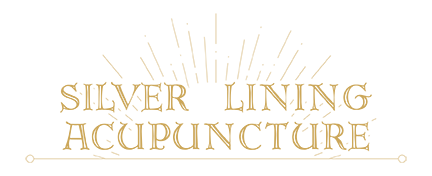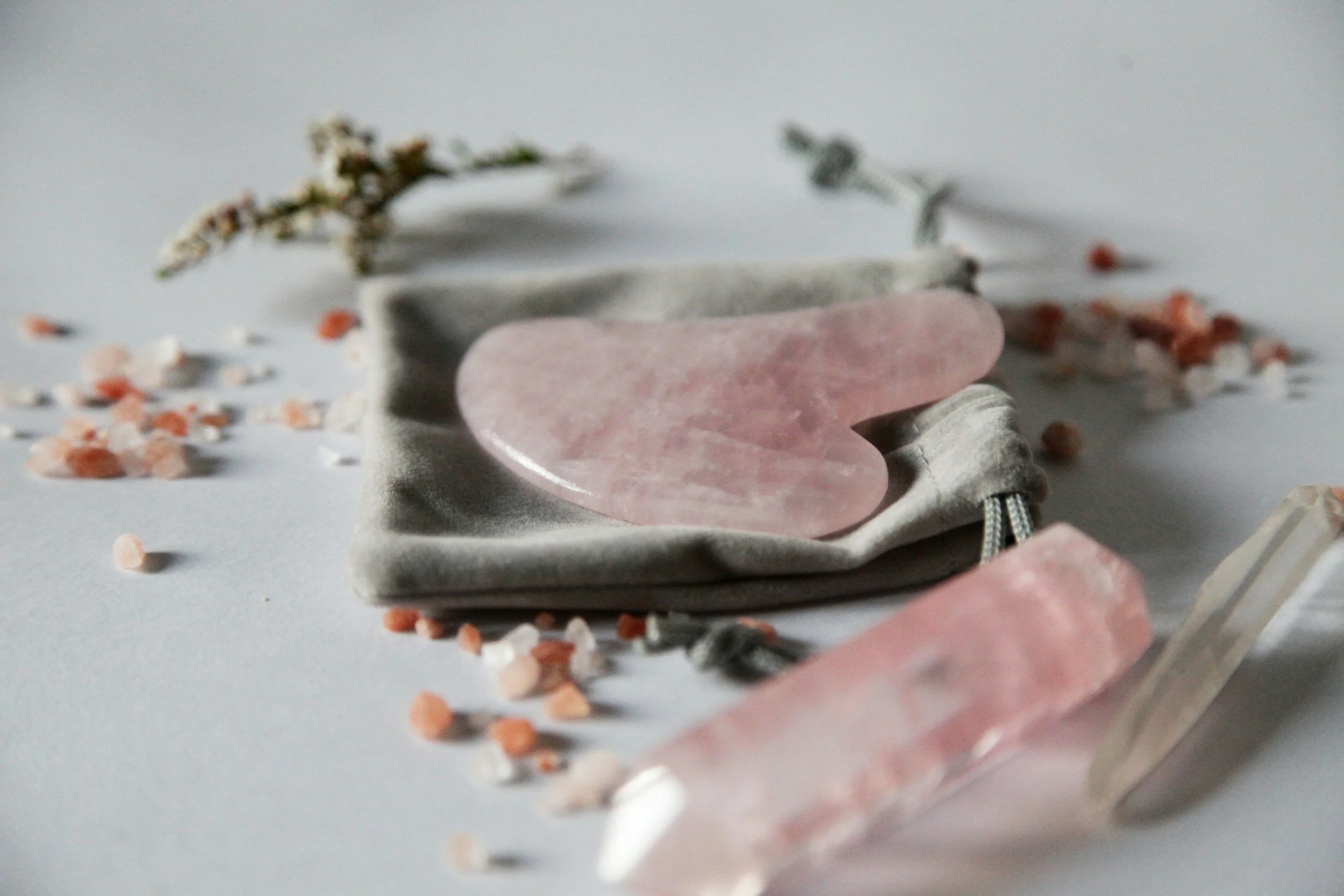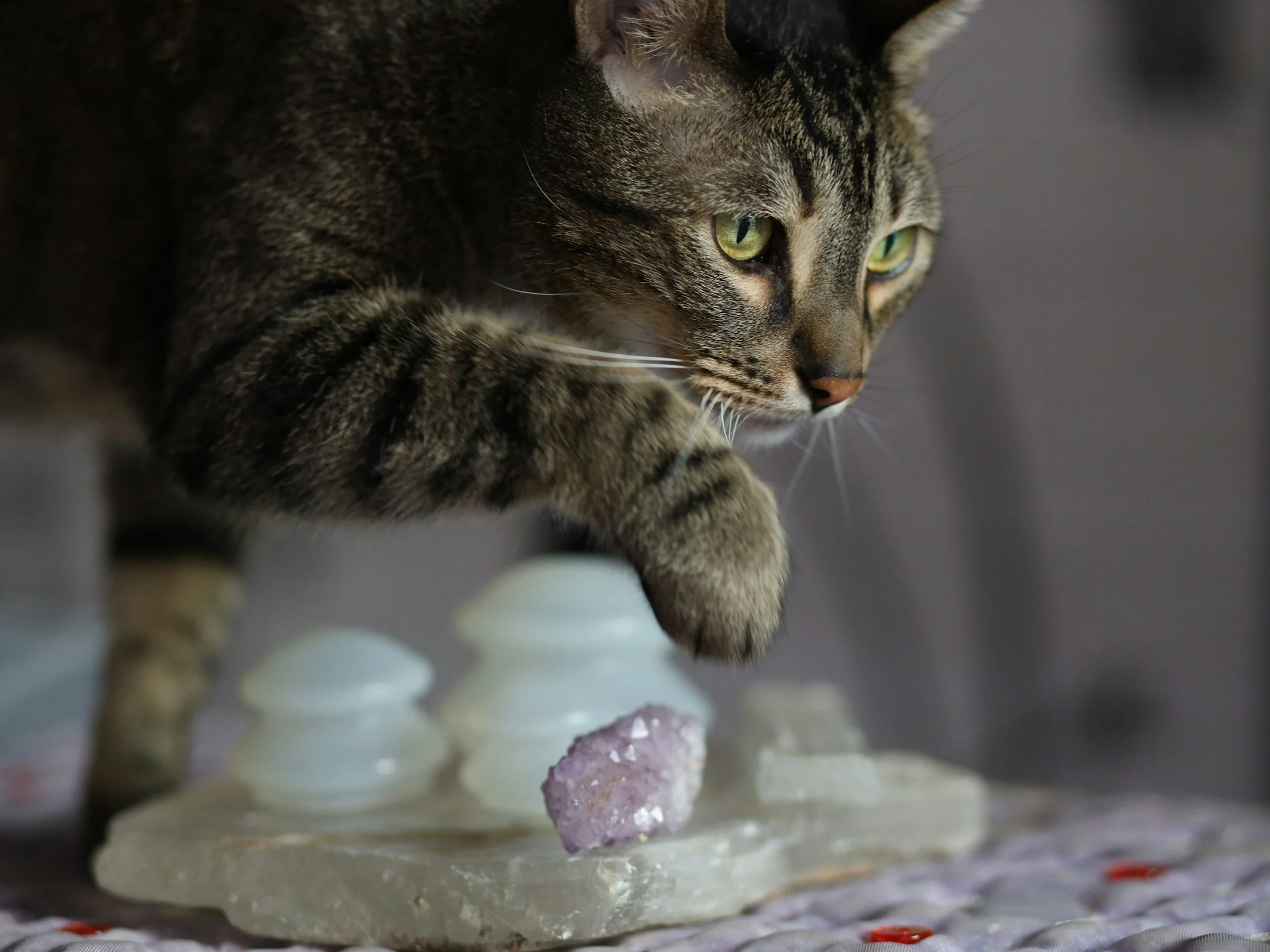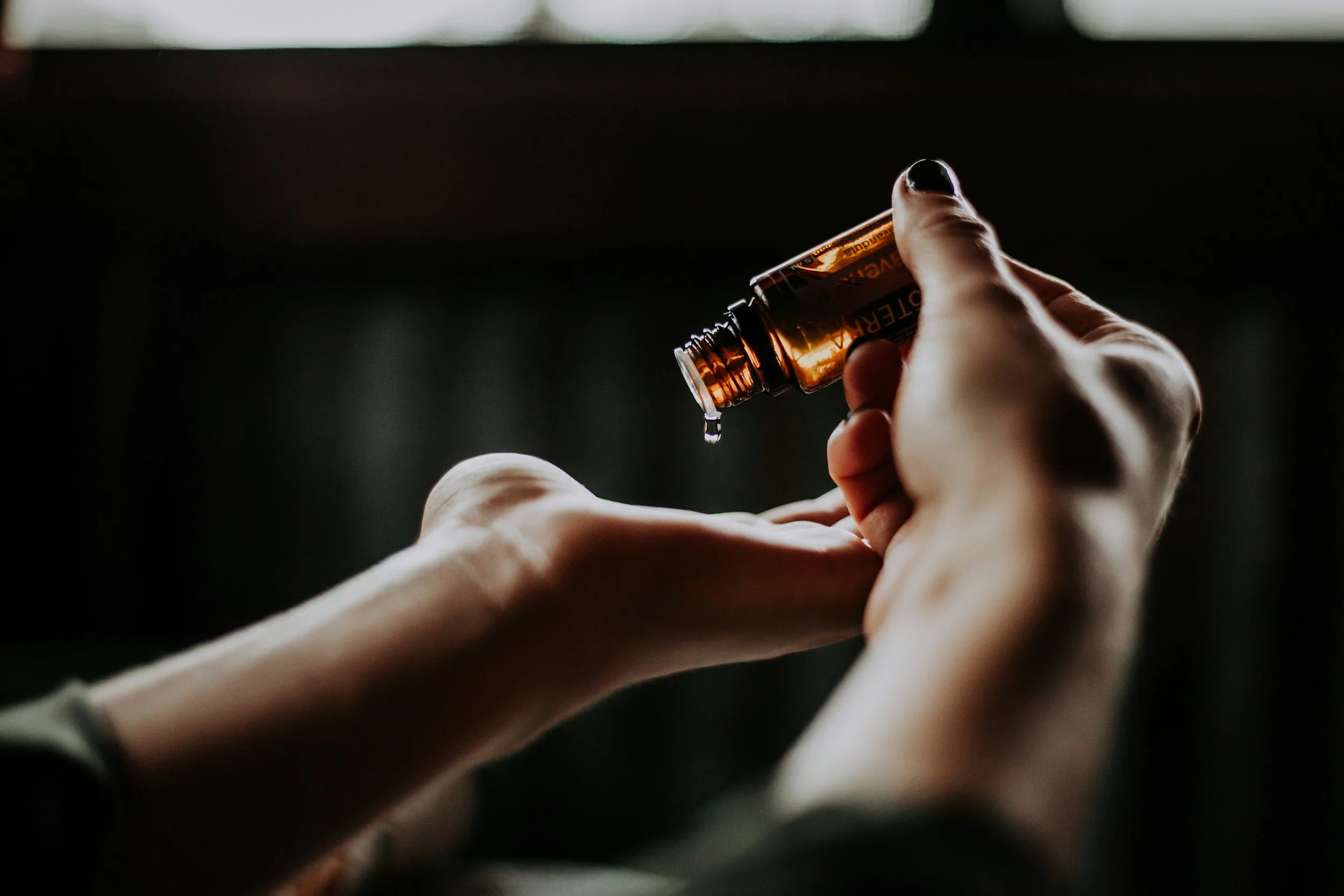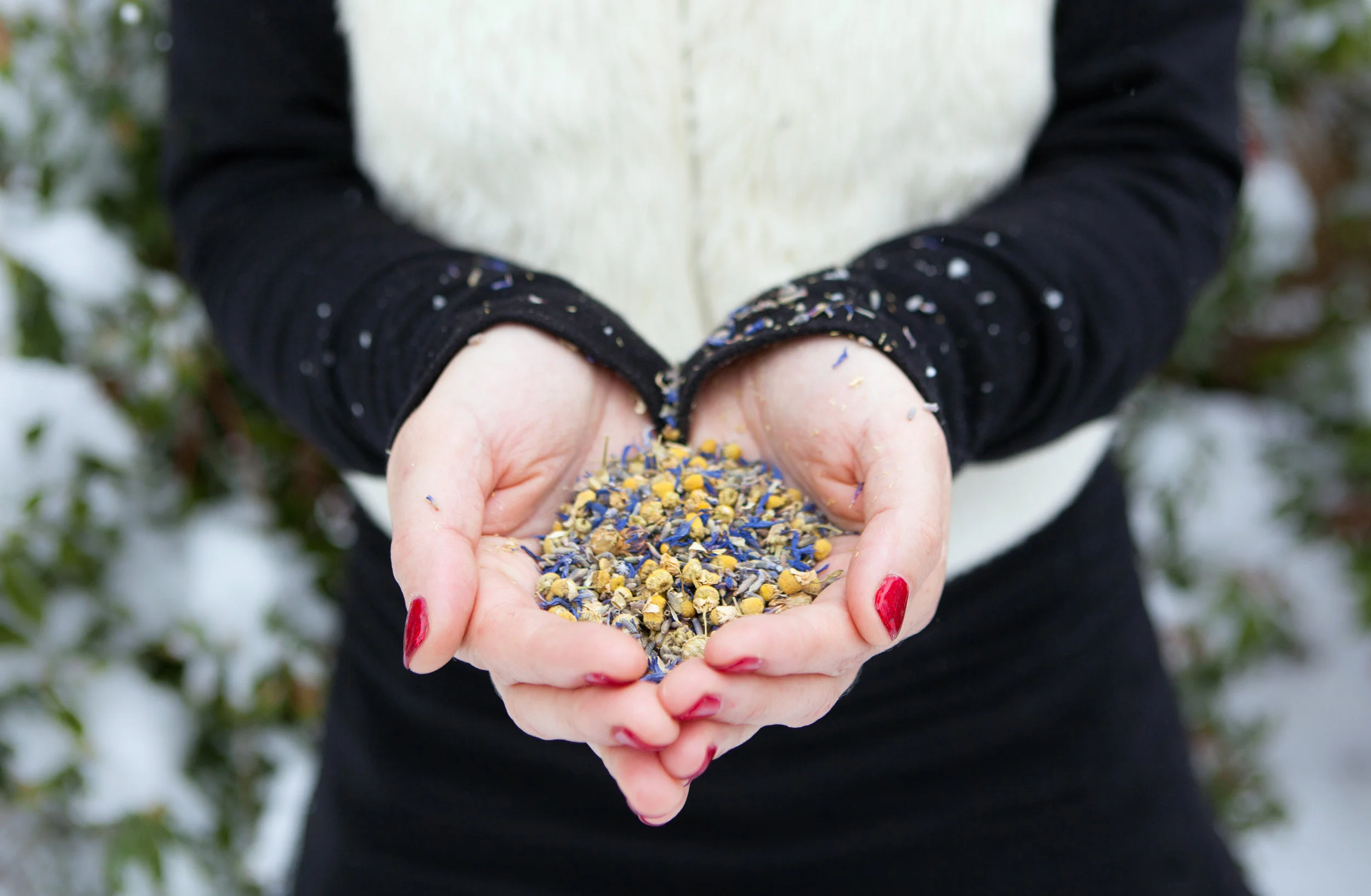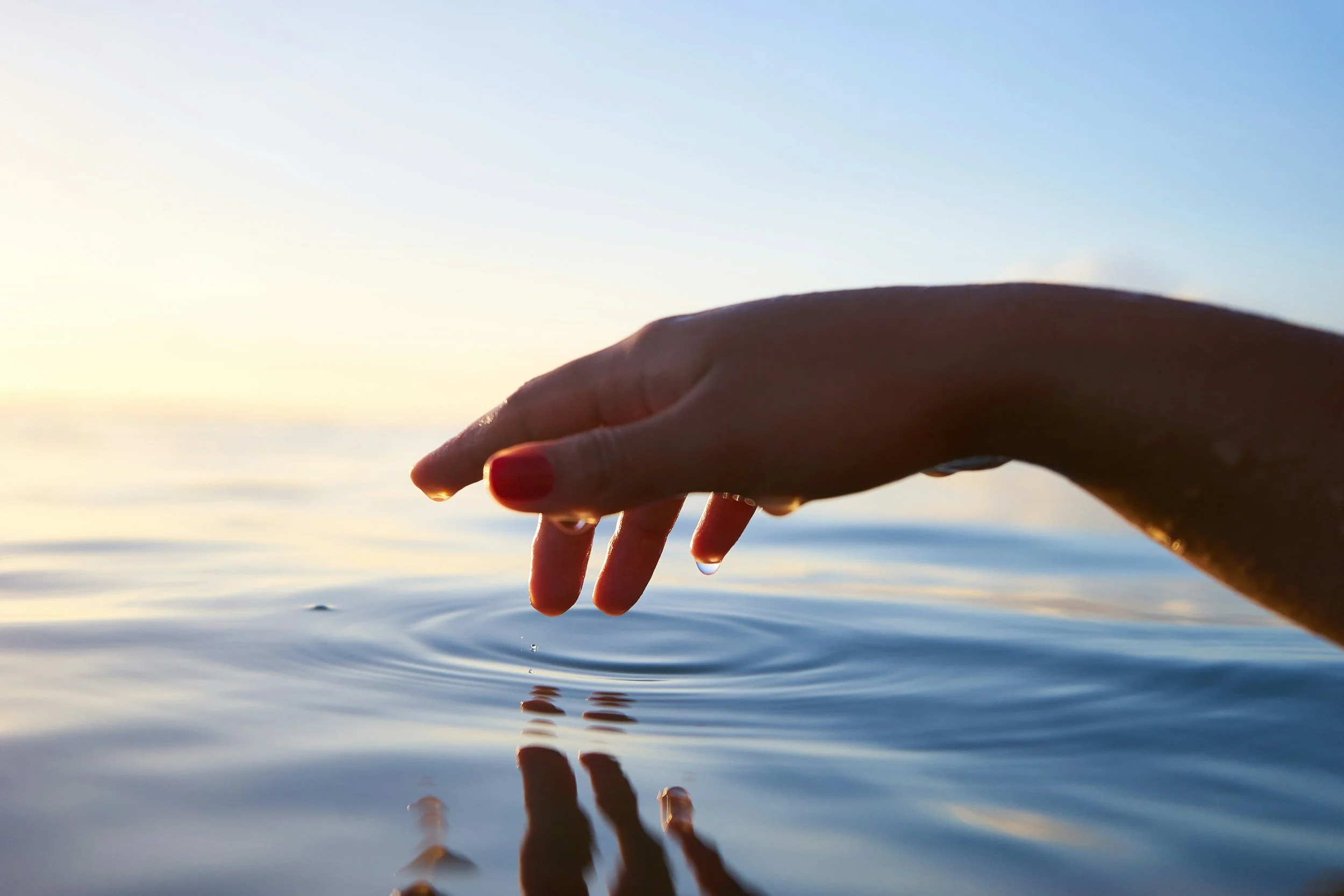
Threads of Wisdom—
The Timeless Arts We Practice
Healing through touch, sensation, sound, and vibration is as ancient as humanity itself—woven into rituals, medicines, and spiritual practices across every culture and era. They are not new inventions, but continuations of threads woven across cultures and centuries—echoes of practices once carried by healers, shamans, and physicians of old. Each modality holds both a scientific explanation and a mystical resonance, bridging body, spirit, and cosmos.
In practice, these healing arts do not stand apart, but weave together as one tapestry of care. A craniosacral touch may flow into the resonance of tuning forks; fascia may unwind with the assistance of gua sha or cupping; sound and subtle energy may intermingle with breath.
Each of these modalities is a doorway into wholeness. In your session, they may appear singly or together—guided not by protocol, but by the body’s own wisdom and its natural longing for balance.

Craniosacral Therapy—
Ancient Roots &
Modern Practice
Craniosacral therapy is often traced to Dr. William Sutherland in the early 20th century, who discovered that the cranial bones and cerebrospinal fluid move with a subtle, rhythmic tide. He called this the “breath of life” that moves through every cell of the body.
Yet, this was not an entirely new revelation. Sutherland, and later Dr. John Upledger, spent time learning from indigenous healers whose traditions emphasized listening to the body’s subtle pulses and trusting its innate ability to self-correct.
In Native American teachings, for instance, there is a recognition of the body’s inner rivers—currents of life force that flow through bone and tissue, echoing the rhythms of nature. Craniosacral work carries this same reverence: that within the stillness, there is a pulse older than words, and when the practitioner’s hands listen, the body can find its way home.
Today, craniosacral therapy bridges modern anatomy with timeless ways of knowing. Gentle holds along the skull, spine, and sacrum release restrictions in the nervous system, soothe trauma, and invite profound states of peace.
Clients often describe it as “being reset from the inside out.”
Gua Sha—
The Ancient Art of Releasing Stagnation
Gua sha is a practice rooted in the medicine of ancient China, its lineage stretching back thousands of years. Traditionally, smooth jade, horn, or porcelain tools were stroked across the skin to move stagnant qi and blood, clear heat, and release illness from the surface. Its name means “to scrape away sand,” referring both to the technique and the reddish markings that may appear—signs of stagnation leaving the body.
In its deeper meaning, gua sha is not just about circulation—it is about unburdening. The scraping motions lift away what has been stuck: old pain, tension, toxins, unresolved emotion. The temporary markings are a visible reminder of the invisible weight being released.
Modern science explains gua sha’s benefits through increased microcirculation, immune activation, and anti-inflammatory effects. Yet practitioners know there is more: gua sha opens channels, restores flow, and symbolically helps a person shed what no longer serves, allowing vitality to return.

Sound Healing & Planetary Tuning Forks—
Tuning into the Celestial Music of the Body
Sound has always been medicine. From the chants of Vedic sages to Tibetan singing bowls, from the frame drums of shamans to the gongs in ancient China—humanity has always known that vibration heals. Sound bypasses the thinking mind and speaks directly to the body’s water, bones, and energy fields.
Planetary tuning forks extend this lineage into the cosmos. Each fork is calibrated to the orbital frequency of a celestial body—Earth, Moon, Sun, planets or asteroids—using the mathematics of Johannes Kepler and the insights of modern sound researchers. When placed on the body, these frequencies awaken resonance in fascia, bone, and organ systems. When played in the auric field, they clear stagnant energy and align the individual with universal rhythms.
Clients often feel both grounded and expansive—rooted in their body while simultaneously attuned to something vast and cosmic. The sound is not only heard, but felt: a deep hum through the bones, a vibration that reminds the body it is an instrument of the universe.
Cupping—
Drawing Out What is Hidden
Cupping is one of the oldest healing arts on Earth—found in China, Egypt, Greece, and the Middle East. Traditionally, glass, bamboo, or clay cups were placed on the skin and heated to create suction. This gentle vacuum draws blood, lymph, and energy toward the surface, pulling out stagnation from the depths.
The dark circles left behind are not bruises but marks of liberation—evidence that what was stuck has been moved. Each cup is like a mirror reflecting where the body has been holding onto pain or stress.
Spiritually, cupping has been seen as a way of lifting burdens, extracting illness, and lightening the body. Physically, it increases circulation, relaxes tight muscles, and supports detoxification. Together, it is both practical and mystical: a vessel drawing out the hidden, so the body may once again flow freely.
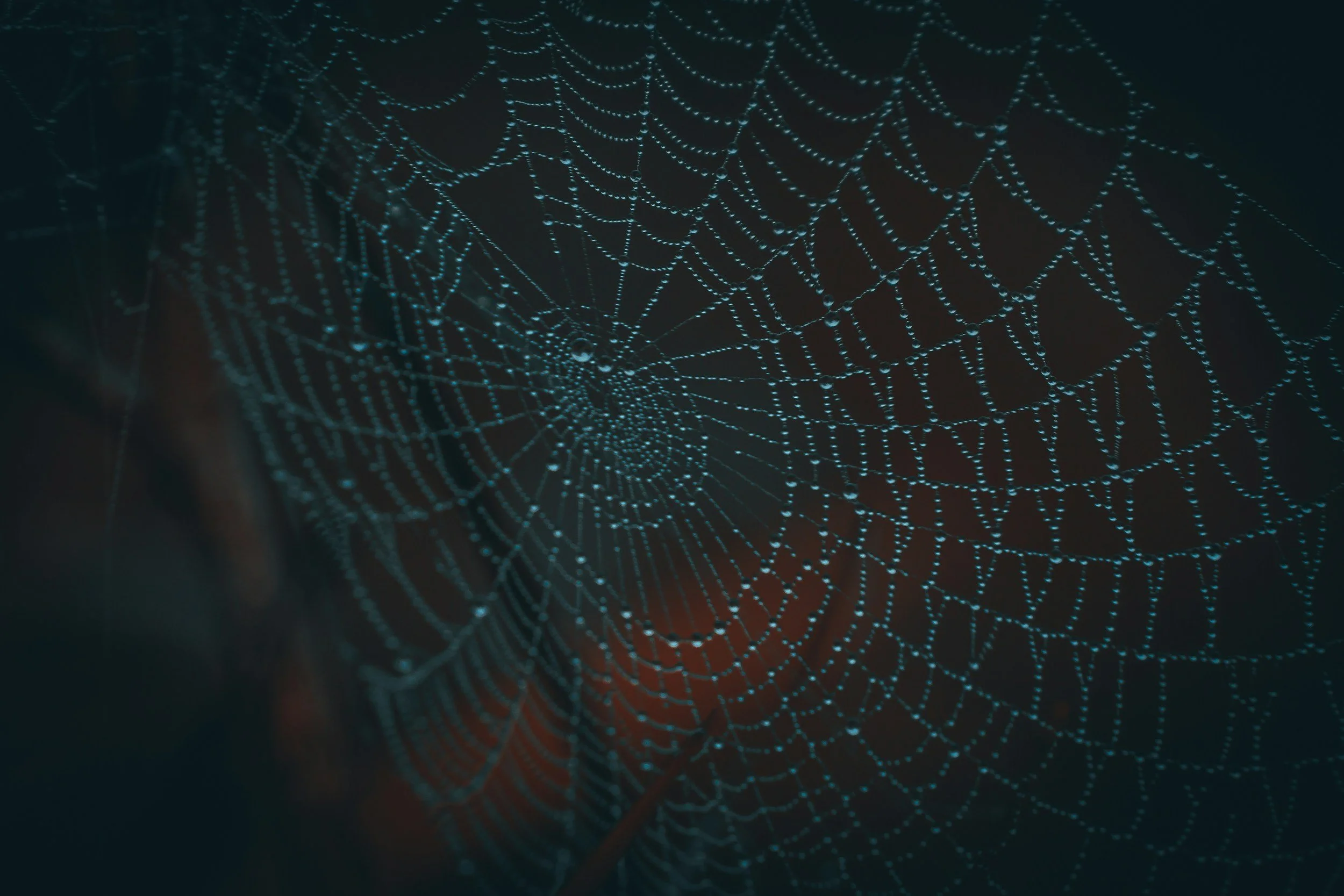
Myofascial Release—
Tapping into the Living Web of Fascia
Fascia is the connective tissue that surrounds, supports, and links every structure of the body—a continuous, intelligent web. It remembers. It holds the imprints of old injuries, postures, traumas, even emotions. When restricted, fascia can tug on distant structures, create pain, limit mobility, and disrupt the body’s overall harmony.
Myofascial release is the art of listening to this web. Instead of forcing change with pressure, the practitioner waits, follows, and gently sustains contact until the fascia itself begins to unwind. It is a slow melting, a returning of space, a yielding that comes from within rather than imposed from without.
Esoterically, fascia has been described as the body’s inner fabric of light—a crystalline matrix through which subtle energy flows. When it softens, clients often report not only physical relief but also emotional catharsis, as if long-held memories stored in tissue finally exhale.
Aromatherapy—
The Spirit of Plants
Long before the word aromatherapy was coined, healers across the world distilled the wisdom of plants into fragrant oils. From the resins burned in Egyptian temples to the lavender fields of Provence, essential oils have been medicine, ritual, and offering. Each drop carries the concentrated essence of a plant—its chemistry, its fragrance, and its subtle spirit.
Modern science confirms what ancient healers intuited: essential oils influence the nervous system, immune response, and emotional state. Yet beyond their measurable effects, oils act as allies—guides that remind us of the Earth’s living intelligence. To breathe in frankincense is to connect with prayer; to anoint with rose is to invite the heart’s softening; to work with peppermint is to awaken clarity and focus.
In treatment, oils may be diffused, applied topically, or simply introduced through inhalation. They weave gently with bodywork and energy practices, amplifying the release of tension and inviting deeper restoration. Essential oils are not perfumes; they are plant teachers—each one a story, a medicine, a note in the symphony of healing.
Snow Lotus Essential Oils
At our clinic, we work with and carry Snow Lotus Essential Oil Blends—carefully crafted by master herbalist and acupuncturist Peter Holmes, L.Ac., M.H.. These oils are not ordinary aromatherapy; they are designed specifically for practitioners of Chinese medicine, rooted in the Five-Element tradition that addresses both Qi (vital energy) and Shen (spirit, mind, heart).
Each blend is a living medicine, distilled from plants sourced directly from small, artisan growers around the world who cultivate and harvest with respect for the earth. Most are certified organic, and all are created in small batches to preserve their potency, purity, and vibrational integrity.
In practice we use these blends to support emotional balance, deepen acupuncture and bodywork treatments, and help unwind patterns of stress and imbalance. Patients often describe the experience as grounding, uplifting, and profoundly restorative. The oils can be diffused, inhaled, or used at home between sessions—extending the benefits of your treatment into daily life.
We invite you to explore our selection in our store, and discover which oils call to you.
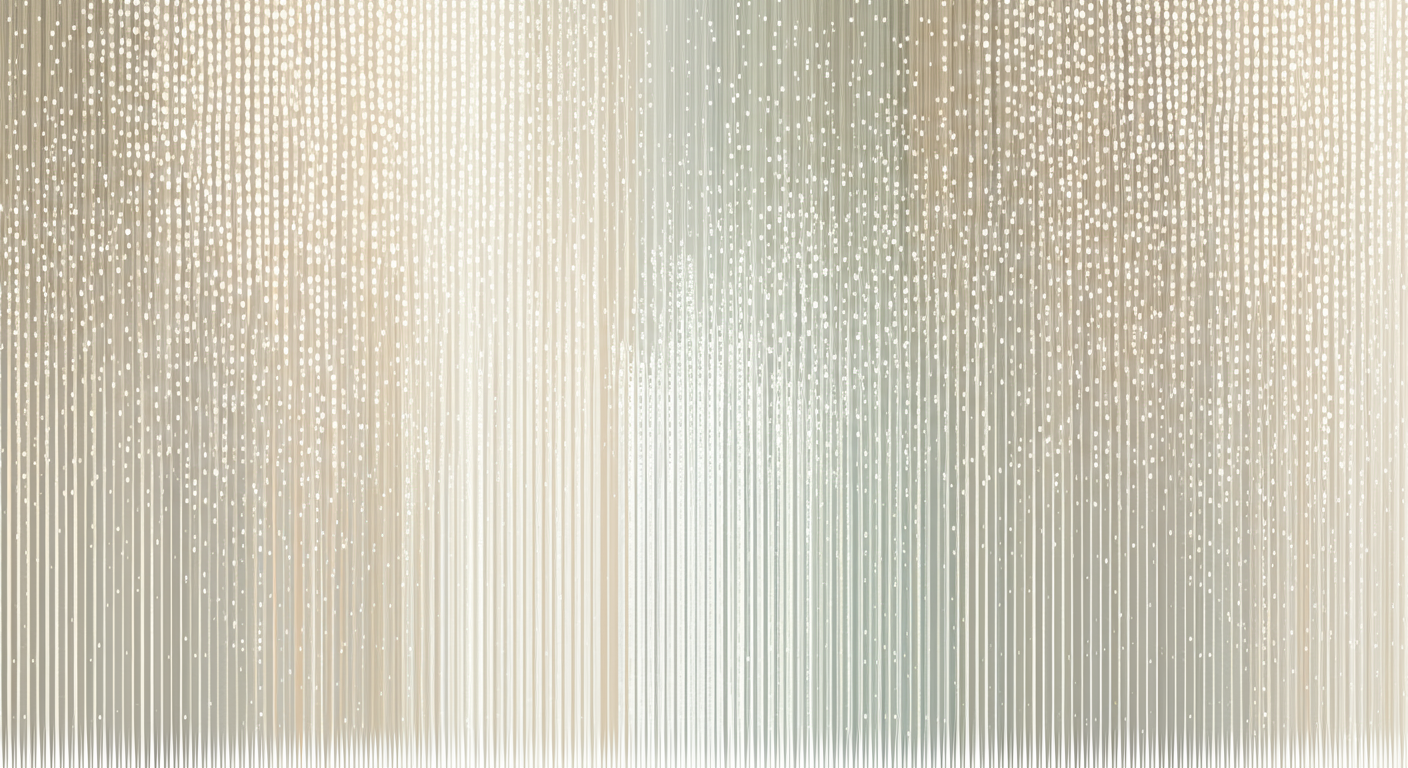
FAQs
What is craniosacral therapy?
Craniosacral massage is a gentle, hands-on therapy that works with the body’s natural rhythms to release tension in the head, neck, and spine. It supports relaxation, stress reduction, and nervous system regulation. The touch is very light and most patients find it deeply calming.
Is craniosacral therapy painful?
Craniosacral therapy is generally not painful. It uses very gentle, light touch—often just a few grams of pressure—to help release tension in the fascia, joints, and craniosacral system. Most people find it deeply relaxing, and some even fall asleep during a session. You may feel subtle shifts or releases in your body, but it should never feel sharp or uncomfortable.
What is myofascial release?
Myofascial release targets the fascia — the connective tissue surrounding muscles and organs — to relieve tightness, improve mobility, and reduce pain. Gentle, sustained pressure allows fascia to release restrictions. This is a subtle shifting of tissue rather than a deep tissue massage.
What is fascia?
Fascia is a thin but strong layer of connective tissue that surrounds and weaves through every muscle, bone, nerve, and organ in your body—think of it as a supportive web that holds everything together. When fascia is healthy, it’s flexible and allows smooth, pain-free movement. But stress, injury, poor posture, or repetitive strain can cause fascia to tighten, thicken, or form adhesions. This restricts movement, limits blood flow, and puts pressure on nerves, which often creates pain, stiffness, or a “stuck” feeling in the body. Because fascia is interconnected, restrictions in one area can cause discomfort in seemingly unrelated areas.
Is myofascial release like deep tissue massage?
Myofascial release is different from traditional deep tissue massage. While deep tissue massage often uses firm pressure and focuses on muscle layers to release tension, myofascial release works more gently and slowly, targeting the fascia—the connective tissue surrounding muscles, organs, and joints. The goal is to help the fascia lengthen and release restrictions, often using subtle, sustained pressure rather than strong, forceful strokes. It’s more about easing tension and improving mobility than “working out knots.”
What is gua sha?
Gua sha is a traditional East Asian therapy where a smooth tool is gently scraped across the skin to improve circulation and release muscle tension. Light redness or temporary marks may appear, fading within a few days.
Is gua sha painful?
Gua sha is generally not considered painful, but it can feel intense at times. The practitioner uses a smooth tool to gently scrape the skin, which increases circulation and helps release muscle tension. Some people describe the sensation as “scraping” or “deep pressure,” but most find it relieving rather than painful. It’s common for temporary redness or light bruising (called petechiae) to appear afterward—this is a normal response and usually fades within a few days.
What is cupping therapy?
Cupping is a traditional therapy that uses suction to gently lift the skin and underlying tissues. Special cups—made of glass, silicone, or plastic—are placed on the body, creating a vacuum effect that increases circulation, loosens tight muscles, and supports the body’s natural healing processes. The sensation can feel like a deep stretch or pulling on the skin, but it is generally comfortable. It often leaves temporary circular marks or redness where the cups were placed—these are not bruises, but signs of increased blood flow that typically fade within a few days.
What is aromatherapy?
Aromatherapy is the therapeutic use of essential oils derived from plants, flowers, roots, and resins to support physical, emotional, and spiritual well-being. The oils can be inhaled, diffused, or applied topically (always diluted) to gently influence the body’s systems and mood.
How does aromatherapy work?
When inhaled, aromatic molecules travel directly to the brain’s limbic system—the area linked to emotions, memory, and autonomic functions like heart rate and breathing. This makes aromatherapy especially powerful for calming the nervous system, lifting mood, and reducing stress. When applied topically, oils can also support circulation, relieve tension, and nurture the skin.
What conditions can aromatherapy support?
Aromatherapy may help reduce stress and anxiety, improve sleep, relieve headaches, ease muscle tension, support digestion, and enhance focus. Some oils are also used for immune support, respiratory health, and menstrual or menopausal balance.
Which essential oils do you use in the clinic?
We use high-quality, ethically sourced essential oils, including Snow Lotus Five Element Blends, created by Peter Holmes for practitioners of Chinese medicine. These blends are designed to shift patterns of imbalance among the Five Elements (Wood, Fire, Earth, Metal, and Water), working on both the physical body (Qi) and the emotional-spiritual self (Shen).
Can I use essential oils at home?
Yes! Many oils can be safely used at home with guidance. We often recommend blends for relaxation, focus, or energy support, and the Five Element Blends are a powerful way to integrate holistic self-care between treatments. We invite you to explore our selection in our store, and discover which oils call to you.
What is tuning fork therapy?
Tuning fork therapy uses calibrated metal instruments that produce specific sound frequencies (measured in hertz, or Hz). When applied to the body, these vibrations help release tension in muscles and fascia, calm the nervous system, and support circulation and healing.
How do tuning forks help with myofascial release?
The vibration penetrates soft tissues and fascia, creating a gentle mechanical wave. This helps:
Soften tight fascia and muscle knots
Improve lymphatic flow and circulation
Reduce inflammation and pain
Relax the nervous system, easing stress-related tension
Which frequencies are used for body pain?
Different frequencies are chosen depending on the area of the body and therapeutic goal:
128 Hz (Otto Tuner): Commonly used for joint and muscle pain, grounding, and myofascial release.
136.1 Hz (Ohm frequency): Deep relaxation, nervous system balance, helps with tension-related pain.
64 Hz: Lower frequency, effective for fascia, deep tissue release, and large muscle groups.
256 Hz / 512 Hz: Often used together for harmonics, supporting pain relief and circulation.
What are planetary tuning forks?
Planetary tuning forks are calibrated to the orbital frequencies of celestial bodies (Earth, Moon, Sun, planets) as calculated by astronomer Hans Cousto in “The Cosmic Octave.” These forks resonate with natural cycles and rhythms, helping align the body with cosmic patterns for both physical and energetic balance.
How are planetary frequencies measured?
Each planet has a frequency based on its orbit. These frequencies are converted into audible hertz (Hz) using mathematical octave scaling. For example:
Earth (136.1 Hz, “Ohm”): Deeply grounding, supports relaxation and meditation.
Sun (126.22 Hz): Vitality, life force, warmth.
Moon (210.42 Hz): Emotional balance, feminine energy, intuition.
Mercury (141.27 Hz): Communication, clarity, nervous system support.
Venus (221.23 Hz): Harmony, creativity, love.
Mars (144.72 Hz): Energy, motivation, muscle activation.
Jupiter (183.58 Hz): Expansion, optimism, circulation.
Saturn (147.85 Hz): Structure, grounding, bone health.
How are planetary tuning forks used in treatment?
They can be applied directly to the body (on joints, muscles, acupuncture points, or fascia) or used in the auric field. On the body, they support:
Pain relief and myofascial release
Nervous system regulation
Circulation and lymph flow
Emotional balance and stress reduction
What’s the difference between planetary forks and standard forks (like 128 Hz)?
Standard forks (like 128 Hz) are medical-style, often used for musculoskeletal pain and myofascial release.
Planetary forks weave in a symbolic and energetic layer, linking treatment to natural and cosmic cycles. They’re especially supportive for patients who resonate with holistic, integrative, or spiritual approaches.
Are tuning forks magical?
Tuning forks aren’t “magical” in the supernatural sense, but many people describe their effects as magical because of how deeply calming and transformative they can feel.
Scientifically, tuning forks work through vibration and resonance—frequencies that interact with your body’s tissues, fascia, and nervous system. These gentle vibrations can help release tension, improve circulation, and support the body’s natural healing processes.
While the experience may feel mystical, the effects are rooted in sound therapy and vibrational physics, which makes them both practical and profound.
Is tuning fork therapy evidence-based or energetic?
Both:
Physiologically, the vibration creates a mechanical wave that helps muscles and fascia relax.
Energetically, planetary frequencies are said to attune us to universal rhythms, much like being in nature helps reset the body’s internal clocks.
Do the vibrations feel uncomfortable?
Most people describe the sensation as soothing and deeply relaxing. The vibration penetrates tissue without being invasive, and intensity can be adjusted for comfort.
Will I hear loud noises during tuning fork therapy?
No — the sound is gentle, soft, and often barely audible compared to musical instruments. Most patients describe it as a subtle humming or vibration rather than a “loud noise.” The therapeutic effect comes from the vibration transmitted through the fork into the body’s tissues, not from volume.
Can I book a bodywork only session?
Yes! Katie offers a deeply restorative session combining the gentle precision of craniosacral therapy, the vibrational healing of tuning forks, and the subtle unwinding of myofascial release. Each treatment is guided by energy work and intuitive exploration of the fascia and tissues, inviting the body to release tension and restore balance from the inside out. Sessions may also include gua sha, cupping, or aromatherapy when beneficial. This is not a deep tissue massage—instead, it works on a more refined, subtle level, encouraging profound shifts without force.
Does insurance cover bodywork sessions?
Insurance generally does not cover standalone bodywork sessions. However, some bodywork—such as cupping, gua sha, or myofascial release—may be covered under the “physical therapy” benefit on your plan if medically necessary and performed by a licensed provider. Other therapies, like tuning fork sound therapy, craniosacral therapy or aromatherapy, may be considered complementary wellness services and are typically not reimbursed by insurance.
If you’d like to receive these therapies, you are welcome to add them to your acupuncture session or schedule a separate bodywork appointment on a self-pay basis. We offer time-of-service discounts for cash pay sessions, and we’re happy to review your benefits with you so you know exactly what is and isn’t covered before you begin treatment.
How many sessions will I need?
The number of sessions needed varies for each person, depending on your health goals and how your body responds. Some people notice shifts after just one session, while others benefit from a series of treatments to support deeper or longer-term issues. For acute tension or pain, a few sessions close together may be recommended. For ongoing stress relief, nervous system support, or chronic conditions, weekly or biweekly sessions over several weeks often provide the best results. Your practitioner will work with you to create a plan that fits your needs and comfort level.
Will I be able to relax?
Highly likely! Most patients feel peaceful, grounded, and restored during and after a session. We recommend avoiding caffeine before your appointment and silencing your phone.
Is this kind of bodywork safe for everyone?
These therapies are generally safe when performed by a trained practitioner, but there are a few important considerations:
Craniosacral therapy and myofascial release are very gentle and well tolerated by most people, though extra caution may be needed for individuals with recent head trauma, fractures, or certain medical conditions.
Gua sha and cupping can cause temporary skin discoloration, so they may not be ideal for people with bleeding disorders, those on blood-thinning medications, or anyone with very fragile skin.
Tuning fork therapy is safe and non-invasive for most people. It may not be appropriate directly over fractures, open wounds, or implanted medical devices (like pacemakers).
Most people can safely enjoy aromatherapy when oils are used properly and diluted. However, certain oils are not recommended for children, pregnant people, or those with specific health conditions.
Always share your full health history so your practitioner can ensure the safest and most effective treatment plan for you. Pregnant patients can often benefit from these therapies, but treatment should be adapted and performed by a practitioner experienced in prenatal care.
Can I receive tuning fork therapy if I’m pregnant?
Yes — tuning forks are generally safe during pregnancy, especially when used for relaxation and gentle musculoskeletal release. However:
We avoid strong vibrations directly on the abdomen or pelvic area.
Treatment is focused on safe points like shoulders, back, arms, and legs.
Planetary forks such as Earth (136.1 Hz) or Moon (210.42 Hz) are often especially supportive for grounding, relaxation, and emotional balance.
As always, let your practitioner know if you are pregnant so treatment can be tailored safely for you.
What if I’m sensitive or neurodiverse?
We know that bodywork can feel unfamiliar, especially if you're sensitive to touch, sound, scents, or unexpected sensations—or if you're neurodiverse and appreciate more structure, control, or predictability during your care.
We welcome you just as you are.
Our practitioners are experienced in working with a wide range of sensitivities and will always meet you where you’re at. If you feel nervous, overwhelmed, or unsure, we’re happy to slow things down, explain every step, or pause at any time. You are in control of your session.
We can adapt your treatment by:
Creating a quiet, dim environment—or adjusting lighting, music, or temperature to your preference
Avoiding surprise sensations by narrating the process beforehand
If you find certain scents overwhelming, we’ll either skip aromatherapy or work with grounding, subtle oils that feel supportive rather than intrusive
You’re also welcome to bring your own headphones, music, fidget tool, or anything that helps you feel calm and safe.
Essential oils can be very stimulating, so we always start with the mildest approach—like diffusing at a distance, using a very light dilution, or simply introducing the scent on a cotton ball so you can control how close it is. Some patients prefer just a brief inhalation rather than having oils diffused in the room.
Our goal is to create a treatment space that feels grounded, respectful, and soothing—no pressure, no judgment, and no “one right way” to heal. Just your pace, your preferences, your body’s wisdom.
